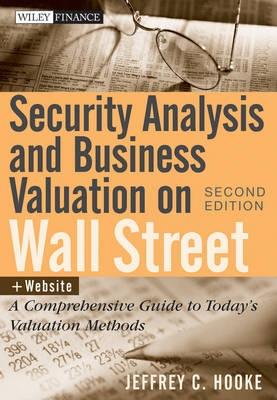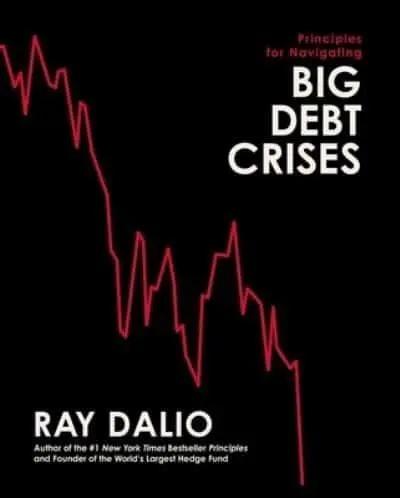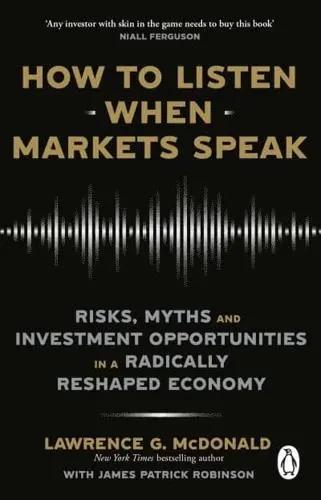This is an insider's look at security analysis and business valuation, as practiced by Wall Street, Corporate America, and international businesses. Two major market crashes, numerous financial and accounting scandals, growth in private equity and hedge funds, Sarbanes Oxley and related regulations, and international developments changed security analysis and business valuation substantially over the last fourteen years. These events necessitated a second edition of this modern classic, praised earlier by Barron's as a 'welcome successor to Graham and Dodd' and used in the global CFA exam. This authoritative book shows the rational, rigorous analysis is still the most successful way to evaluate securities. It picks up where Graham and Dodd's bestselling "Security Analysis" - for decades considered the definitive word on the subject - leaves off. Providing a practical viewpoint, "Security Analysis on Wall Street" shows how the values of common stock are really determined in today's marketplace. Incorporating dozens of real-world examples, and spotlighting many special analysis cases - including cash flow stocks, unusual industries and distressed securities - this comprehensive resources delivers all the answers to your questions about security analysis and corporate valuation on Wall Street. The second edition of "Security Analysis on Wall Street" examines how mutual funds, private equity funds, hedge funds, institutional money managers, investment banks, business appraisers, and corporate acquirers perform their craft of security analysis and business valuation in today's highly charged environment. Completely updated to reflect the latest methodologies, this reliable resource represents the most comprehensive book written by someone who has actually worked as an investment banker, private equity executive, and international institutional investor. This title shows the methodical process that practitioners use to value common stocks and operating companies and to make buy/sell decisions. It discusses the impact of the two stock market crashes, the accounting and financial scandals, and the new regulations on the evaluation process. It covers how Internet and computing power automate portions of the research and analytical effort. It includes new case study examples representative of valuation issues faced daily by mutual funds, private equity funds, hedge funds, institutional investors, investment banks, business appraisers, and corporate acquirers. It is a perfect tool for professors wishing to show their MBA students the essential tools of equity and business valuation. Security analysis and business valuation are core financial disciplines for Wall Streeters, corporate acquirers, and international investors. The second edition of "Security Analysis on Wall Street" is an important book for anyone who needs a solid grounding in these critical finance topics.
Preface What Is Security Analysis? Recent Trends. Why Study Security Analysis? Overview of the Contents. What's New in the Second Edition. Part I The Investing Environment. Chapter 1 Why Analyze a Security? The Origins of Security Analysis. No Profit Guarantee. Day-to-Day Trading and Security Analysis. Herd Psychology and Security Analysis. Momentum Investors. Game Theory and Security Analysis. The Premise of Security Analysis. Scientific Method. Security Analysis Techniques. Basic Valuation Approaches. Other Valuation Approaches. Summary. Questions and Short Problems. Adopt-a-Company Exercises. Chapter 2 Who's Practicing Security Analysis? Securities Firms and Their Analysts. Major Institutional Investors. A Dying Art? Index Funds and Exchange Traded Funds. Small Money Management Firms. Rating Agencies. Individual Investors: A Special Category. Summary. Questions and Short Problems. Adopt-a-Company Exercises. Chapter 3 Seeking a Level Playing Field. Brief History of Securities Regulation. The Chief Regulator-The Securities and Exchange Commission. Sales and Trading Practices. Margin Regulation. The Life Cycle of a New Security Issue. Summary. Questions and Short Problems. Adopt-a-Company Exercises. Chapter 4 Other Sources of Information. The Business Media. The Free Internet. The Fee for Service Internet. Trade Associations, Consulting Firms, Government Publications and Financial Organizations. Credit Rating Agencies. Securities Firm Research. News Wires. Independent Expert Services. Summary. Questions and Short Problems. Adopt-a-Company Exercises. Part II Performing the Analysis and Writing the Research Report. Chapter 5 Starting the Analysis. The Security Analysis Process. Model Research Report. The Analyst's Responsibility. The Cascade of Projections. Selecting Stocks for Study: Top-Down vs. Bottoms-Up. Limited Time and Resources. The Margin of Safety. Summary. Questions and Short Problems. Adopt-a-Company Exercises. Chapter 6 Industry Analysis. Background. Organizing an Industry Analysis. Industry Classification. External Factors. Demand Analysis. Supply Analysis in the Industry Study. Profitability, Pricing and the Industry Study. International Competition and Markets. Summary. Questions and Short Problems. Adopt-a-Company Exercises. Chapter 7 Company-Specific Analysis. Systematic Approach of a Business Analysis. Overview and Business Description. Products and Markets Section. Production and Distribution. Competition. Other Topics Included in the Business Review. Summary. Questions and Short Problems. Adopt-a-Company Exercises. Chapter 8 Financial Statement Analysis of an Established Business. Beginning the Investigation. The Raw Materials of an Analysis. Evolution of the Approach to Financial Statements. Illustration of the Basic Approach. Review of Neiman Marcus Financial Analysis. Management's Projections. Summary. Questions and Short Problems. Adopt-a-Company Exercises. Chapter 9 The Limitations of Accounting Data. Basic Accounting Issues. Global Issues. Company-Specific Accounting Issues. The Fundamental Objective of Public Companies. Case Study: Stability Corp. Summary. Questions and Short Problems. Adopt-a-Company Exercises. Chapter 10: Financial Analysis and Company Classification. Company Classifications. The Mature Company. The Growth Company. The Cyclical Company. The Declining Company. The Turnaround. The Pioneer. Financial Games. Extra Shares Outstanding? Summary. Questions and Short Problems. Adopt-a-Company Exercises. Chapter 11 Financial Projection Pointers. The Cascade of Projections. The Typical Financial Projection. Alternate Means of Forecasting. Critiquing the Huntsman Chemical Projection. Prepari

 (0 Comentarios)
(0 Comentarios)









